




















A kimono maker and a batik artist collaborate on a stunning showpiece in preparation for the 2020 Tokyo Olympics
The Olympics may still be a couple of years away, but artisans across Japan are already busy working on “Imagine One World in Kimono,” a project that aims to bridge cultures by designing kimonos that represent all the countries and regions slated to participate in the 2020 Tokyo Olympics. A beautifully inclusive initiative that takes its name from the song “Imagine” by John Lennon, an early standout is the kimono and batik piece, designed by Shigeo Okajima, president of the iconic kimono textile company Okaju, in collaboration with Indonesian craftsman Iman.
A celebration of the art of textile dyeing of both Japan and Indonesia, this intriguing kimono and batik collaboration embodies Japan Airlines’ own reverence for tradition and artisanal crafts.
Few traditional garments can evoke romance and drama quite like the kimono. The Japanese garb of choice for festivals and formal occasions, the kimono is, in its simplest iteration, usually a wide-sleeved, ankle-length robe held in place (always left side over right, except in death) by an obi belt tied at the back. Practically a form of wearable art, traditional kimonos are family heirlooms handed down through generations, handmade from the finest silk, and feature lovely prints depicting the seasons.
At Okaju, they specialize in creating exquisite prints using yūzen, described as the most beautiful form of dyeing in the world. Developed in Kyoto in the 17th century, yūzen is a paste-resist dyeing technique in which designs are applied on silk fabrics using stencils and rice paste, allowing for finely detailed patterned textiles that give the appearance of being hand-painted. Yūzen was an ingenious way to replicate the aristocratic brocades that commoners were not allowed to wear, and over time, yūzen itself has become a prestigious artisanal craft.
Founded in 1855 (the 2nd year of the Ansei era), Okaju began as a yūzen workshop, and today is regarded as the finest kimono fabric dyeing workshop in Kyoto. Shigeo Okajima, its fourth generation president, was immersed in the craft early on and has fond recollections of playing in the workshop as a child. “Even so, my grandfather always said, ‘Shigeo, you shouldn’t hold brushes although you [must] learn painting,” he reveals, already being groomed on becoming a producer rather than a craftsman.
Now at the helm of Okaju, Okajima shares, “I am devoting my passion to make textiles that are excellent in design.” He is committed to continuing the legacy of his grandfather in producing luxury kimonos, while rising to the challenge of attracting a wider audience by expanding their product lines and adopting new techniques.

The Imagine One World in Kimono project arrived like a gift, with Okajima recognizing that this was an opportunity to present the art of the kimono not just to the younger generation of Japanese, but to the world. The kimonos of Kyoto are known for their soft, elegant colors, courtesy of a unique yūzen technique called bokashi, which creates “beautiful blurs and color gradients.” But in seeking inspiration for bolder designs that would appeal to a younger, wider audience, Okajima searched through Okaju’s rich archives, and was drawn to a rare batik textile from Indonesia.
Okajima’s love affair with batik dates back to high school, when he chanced upon batik fabrics at an Asian shop. Fascinated by the exotic prints, began collecting batik. At the age of 30, he visited Indonesia for the first time and met with batik artists, further fanning his interest in their traditional hand-dyed textiles. It was also about this time when Okajima started to worry about the future of the art of kimono, as the 1980s saw the decline in the kimono as daily wear, relegating it to formal occasions. Seeing the shift in the market sparked his foray into experimenting with kimonos and Indonesian batik.
Since Okaju had already been producing a kimono line featuring batik prints, Okajima decided to collaborate with the Indonesian artist Iman for the Imagine One World in Kimono piece. He aimed to infuse the regal kimono with vibrant batik patterns, using the traditional Japanese yūzen technique. “We have been collaborating with Iman for 30 years. He is a quite capable designer who knows how to [work with] Japanese kimono,” he attests.
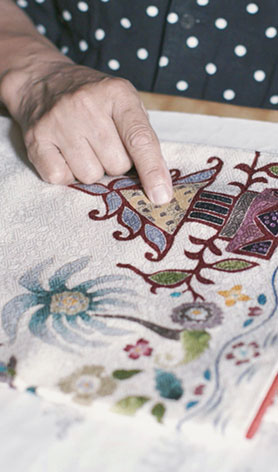
For this project, Okajima would be applying batik prints to a furisode (the most formal style of kimono) for the first time, with the intention of making the most gorgeous piece yet. Okajima kicked off the collaboration by designing the kimono on paper at Okaju. “Next, drawing a sketch on white fabrics such as Jjosette silk, crepe, organdy, and striped crepe. Third, taking it to Indonesia.” Okajima flew to Pekalongan, a port town in Indonesia known for its quality batik, to take it personally to Iman, who would apply the batik wax drawings.
Iman attests, “I thought about how to express a good characteristic of batik.” The fabrics—with Iman’s designs still set in honey wax—were brought back to Japan, where Okaju’s Kkyo-yūzen coloring craftsman set about the complex task of applying the colors. After several more steps in a painstaking process that took about a year to complete, the kimono and batik piece was ready. Okajima is particularly proud of the “upper part filled by batik,” while Iman loves the elegant look and feel of the entire kimono.
A lovingly hand-crafted, hand-dyed kimono is not only a work of art, it is a living tradition—but unfortunately, one that faces extinction. Prohibitive costs have spurred the mass production of machine-made robes in inexpensive fabrics, and pretty soon, the art of the kimono may be lost forever. In his passion to preserve and promote this traditional craft, Okajima consistently seeks fresh—and yes, more affordable—ways to present the beauty of hand-dyed kimonos, not unlike JAL’s own ethos of constant innovation while honoring tradition.
“I want to continue collaborating with Iman and produce excellent merchandise as long as possible. Also, I want to preserve Indonesian traditional batik,” Okajima shares. Hitting two birds with one stone, Okajima assures us that there are no restrictions in using non-Japanese materials and patterns on a traditional kimono. The resulting pattern may look updated and modern, but what’s important is that it still employs the time-honored yūzen-dyeing technique.
Through the Imagine One World in Kimono initiative, Okajima hopes that this encourages younger Japanese to see kimonos in a good light and wear it more often. In addition, Iman hopes the collaboration conveys peace between Japan and Indonesia and the world.
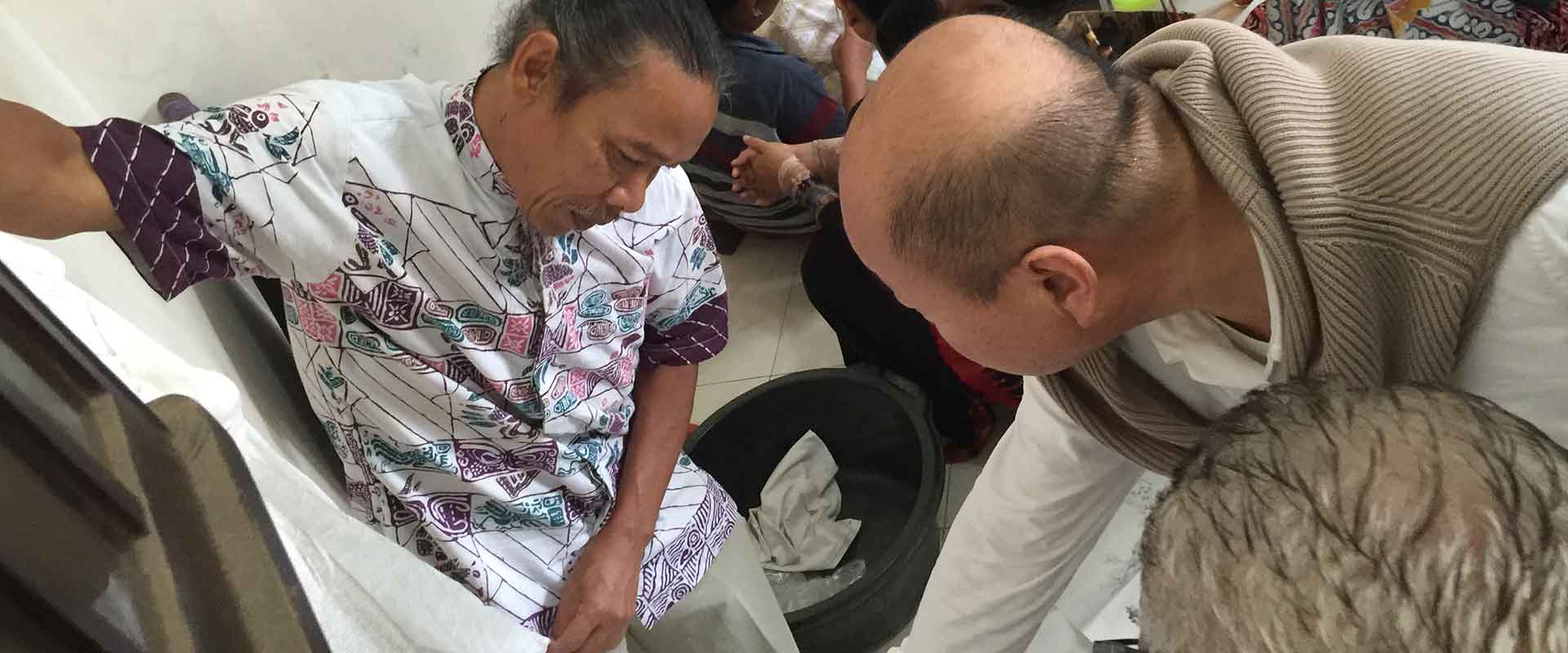
 “We have been collaborating with Iman for 30 years. He is a quite capable designer who knows how to work with Japanese kimono."
“We have been collaborating with Iman for 30 years. He is a quite capable designer who knows how to work with Japanese kimono."

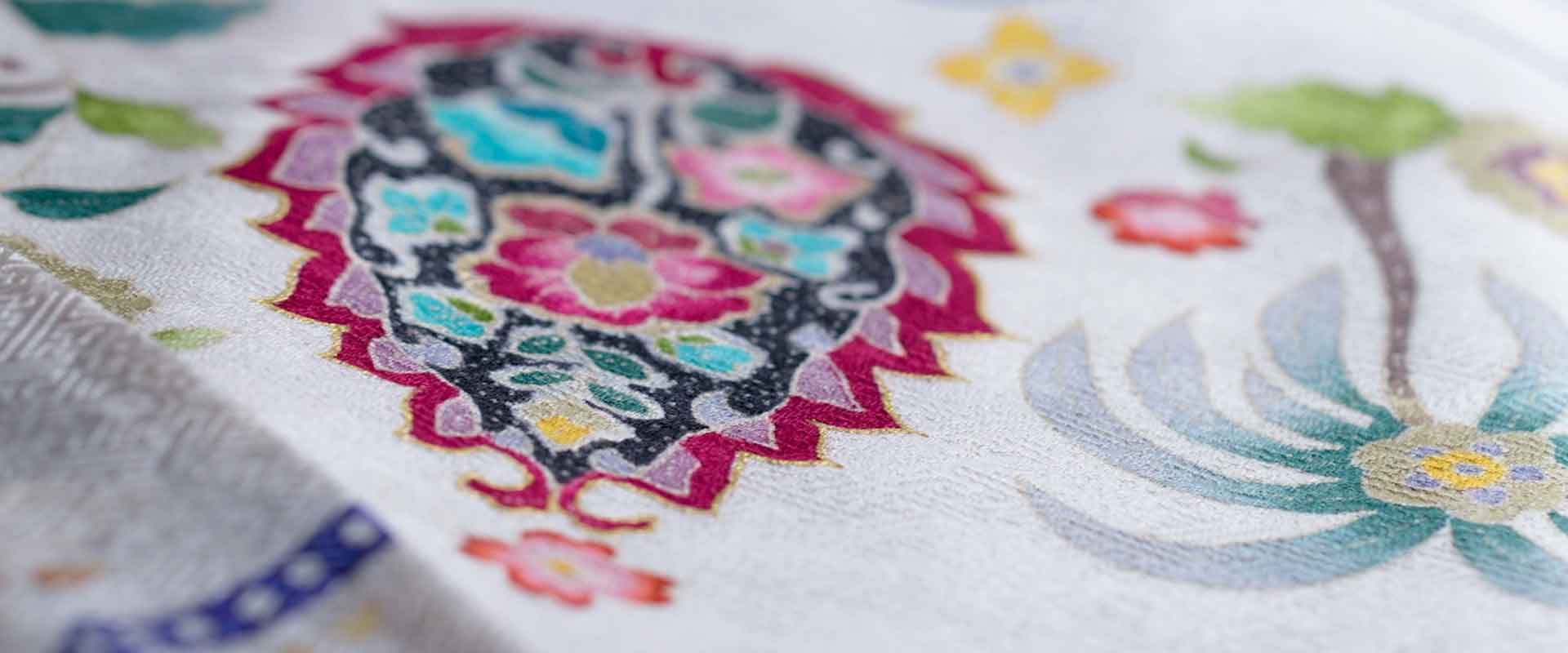
 Shigeo Okjima aimed to infuse the regal kimono with vibrant batik patterns, using the traditional Japanese yūzen technique.
Shigeo Okjima aimed to infuse the regal kimono with vibrant batik patterns, using the traditional Japanese yūzen technique.


 “The design is a fusion of traditional batik and Iman’s own style."
“The design is a fusion of traditional batik and Iman’s own style."


 Pekalongan, a port town in Indonesia known for its quality batik, would apply the batik wax drawings.
Pekalongan, a port town in Indonesia known for its quality batik, would apply the batik wax drawings.

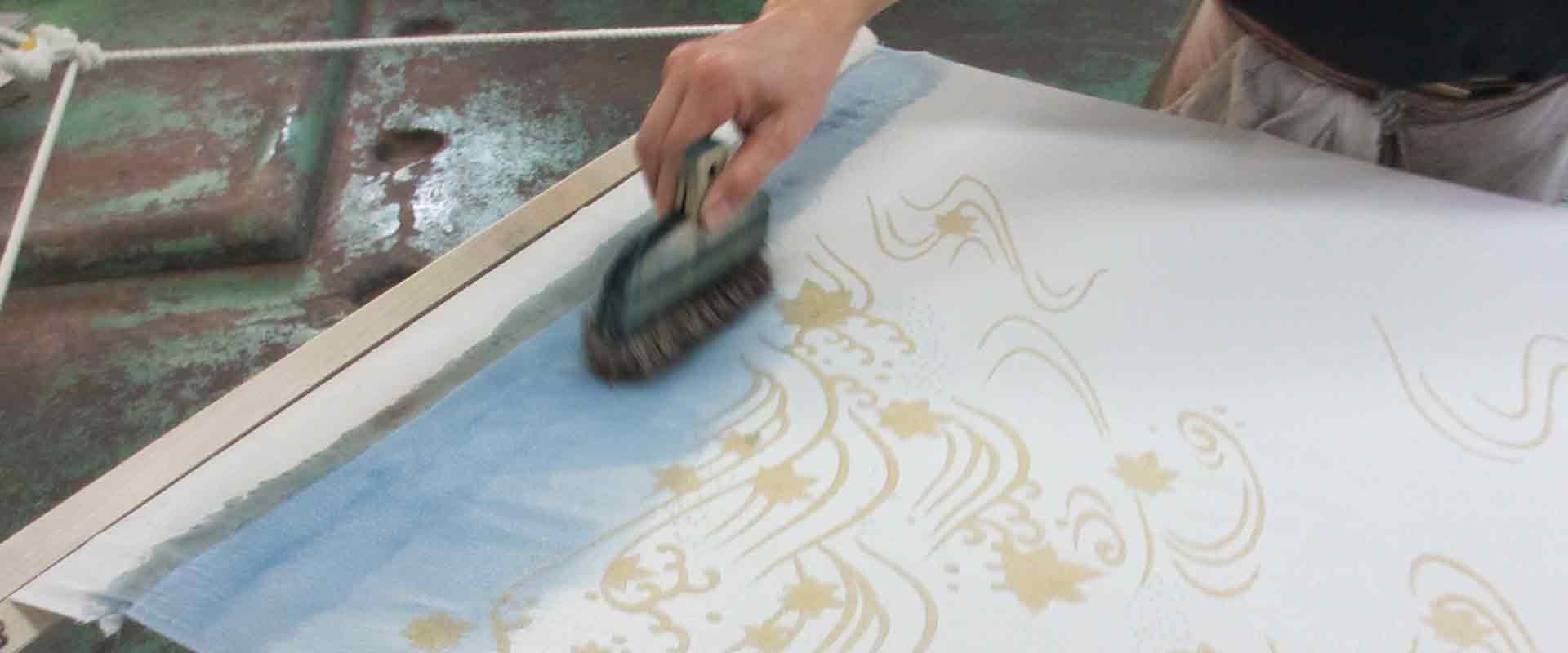
 “I want to continue collaborating with Iman and produce excellent merchandise as long as possible. Also, I want to preserve Indonesian traditional batik,” Okajima shares.
“I want to continue collaborating with Iman and produce excellent merchandise as long as possible. Also, I want to preserve Indonesian traditional batik,” Okajima shares.


 Okajima is particularly proud of the “upper part filled by batik,” while Iman loves the elegant look and feel of the entire kimono.
Okajima is particularly proud of the “upper part filled by batik,” while Iman loves the elegant look and feel of the entire kimono.

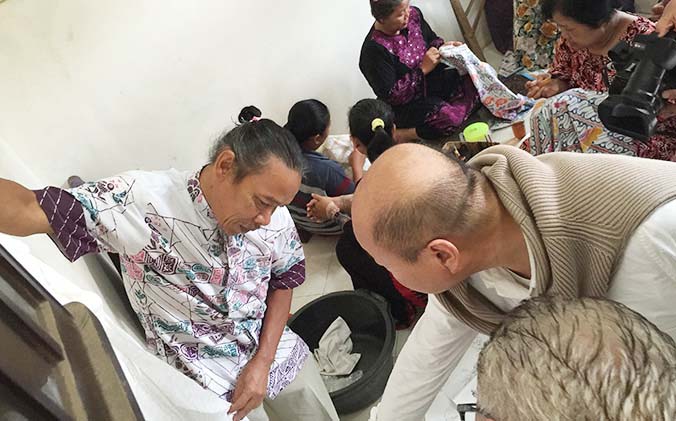

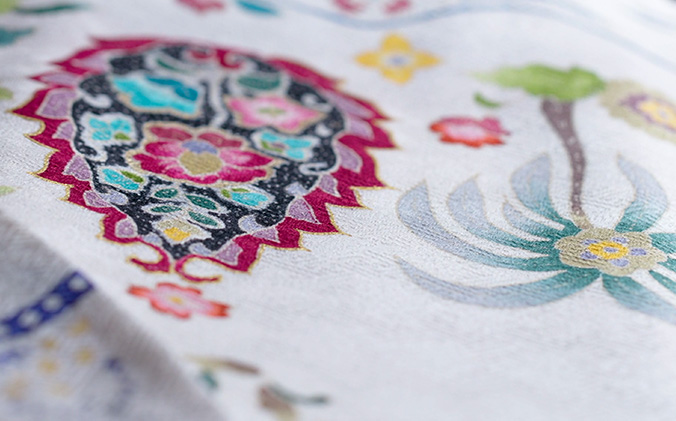
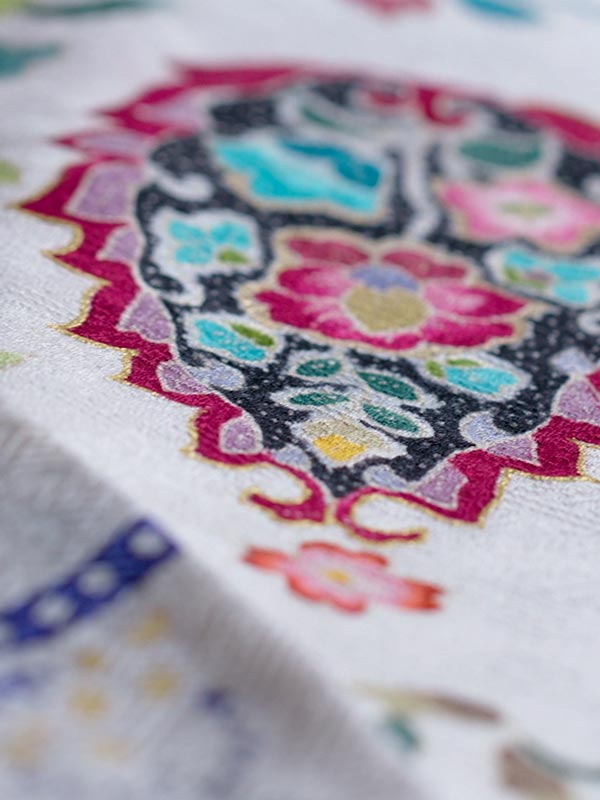
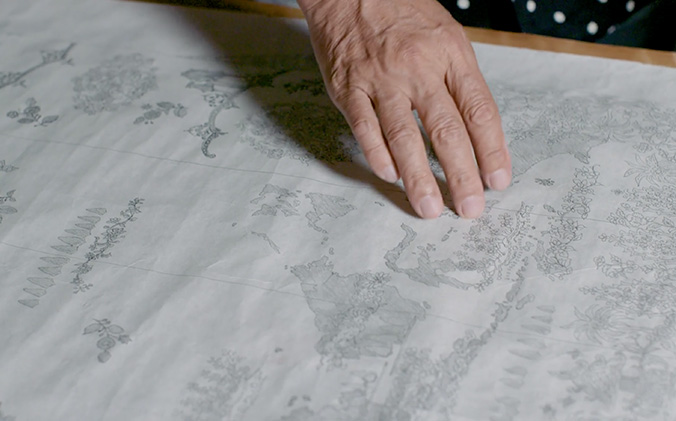
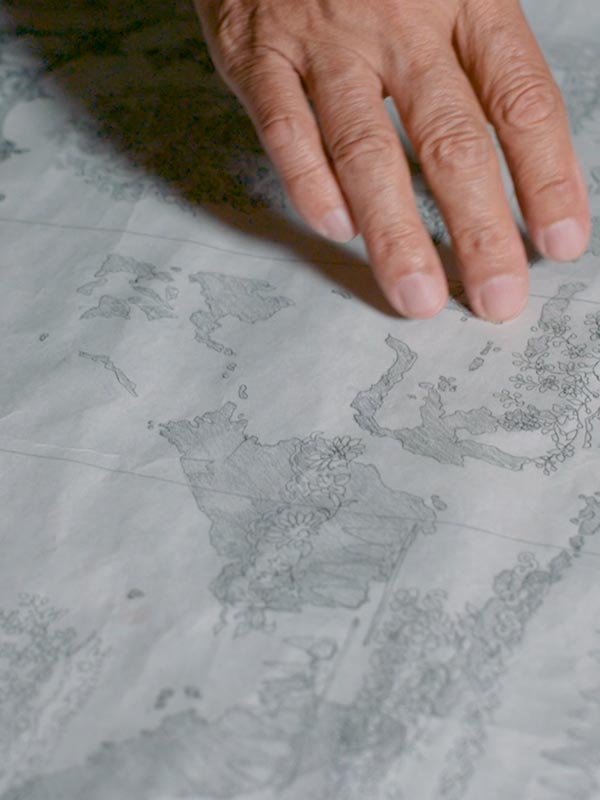

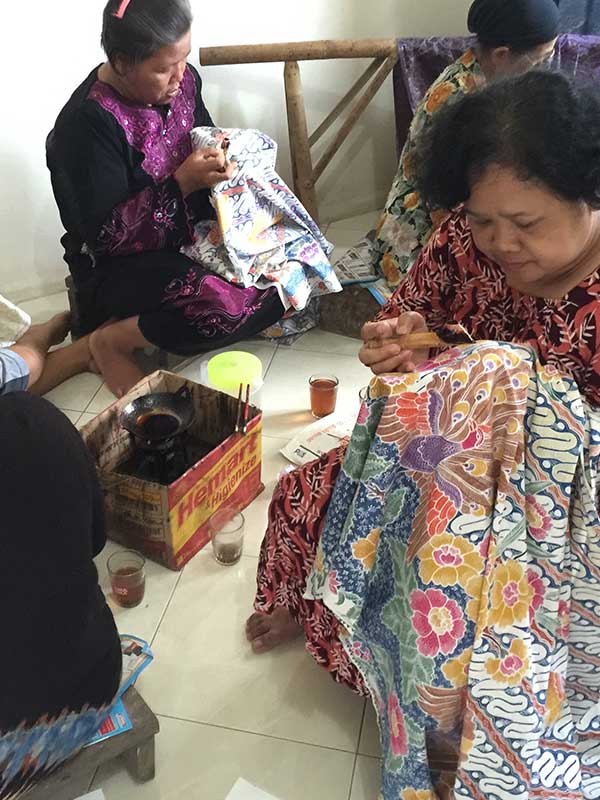

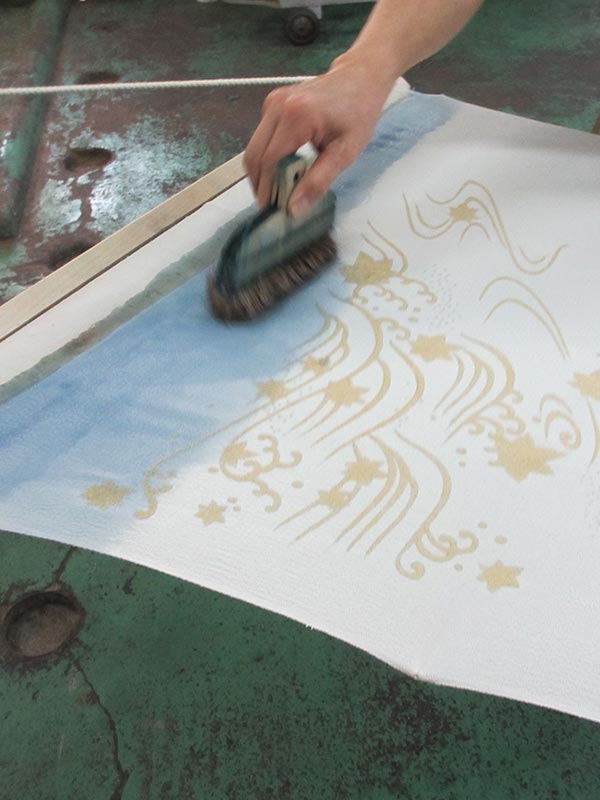

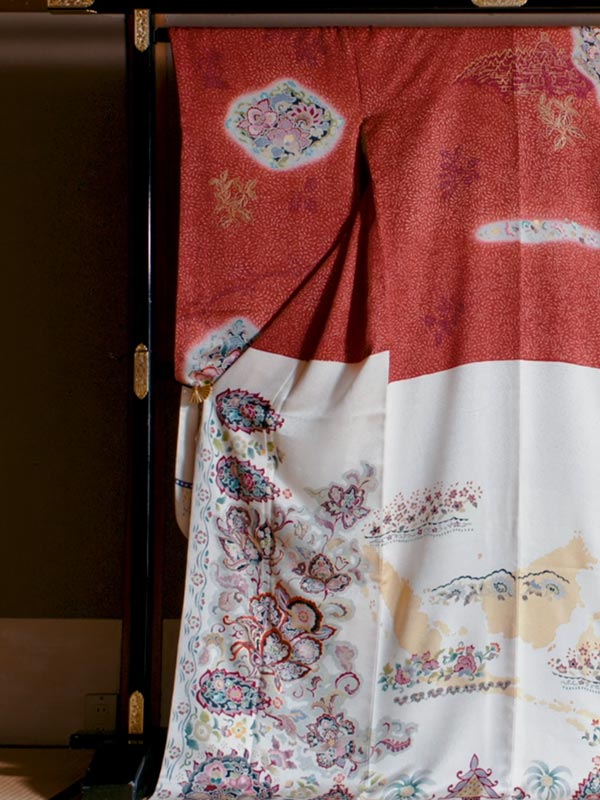

Much like Japanese artisans are renowned for their passion and precision, one can expect this same level of artistry at Japan Airlines (JAL). As Japan’s flag carrier and named the Asia-Pacific No. 1 in On-Time Performance, JAL is committed to delivering safety, comfort, and unparalleled satisfaction to all its customers. From unceasing flight safety efforts to fully-flat business class beds and in-flight wifi, JAL is constantly making technological advancements and adapting to global changes, while consistently upholding the high- quality service it is they are renowned for.
The same way the Imagine One World in Kimono project propels a beloved Japanese tradition into the international spotlight, JAL is a proud ambassador of the spirit of omotenashi. Since its first international flight between Tokyo and San Francisco in 1954, JAL has been bridging cultures, serving as the gateway to Japanese culture and exemplifying Japanese innovation and exquisite hospitality.
And as JAL gears up for global growth, it now offers more overseas routes for greater customer convenience. By increasing the frequency of international routes, opening up new international flight slots at the dual hub of Narita and Haneda, and cooperating with partner airlines to expand global networks, JAL aims to expand its air service route from the current 343 cities to over 500* major cities across the world over the next 10 years. *Including alliances and codeshares.
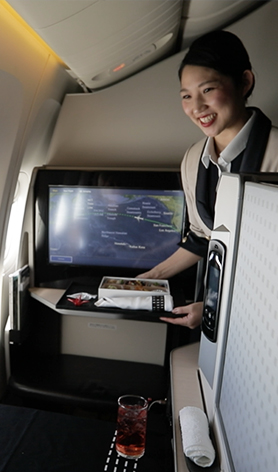

How a global art collective is changing the way we view the world
Read More OFFICIAL AIRLINE PARTNER
OFFICIAL AIRLINE PARTNER TOKYO OLYMPICS 2020
We pride ourselves in providing the highest quality service for our guests both in the air and on the ground.
We take pride in our keen attention to detail that helps us ensure every part of your travel experience has been thought fully taken care of.
Come Soar With Us